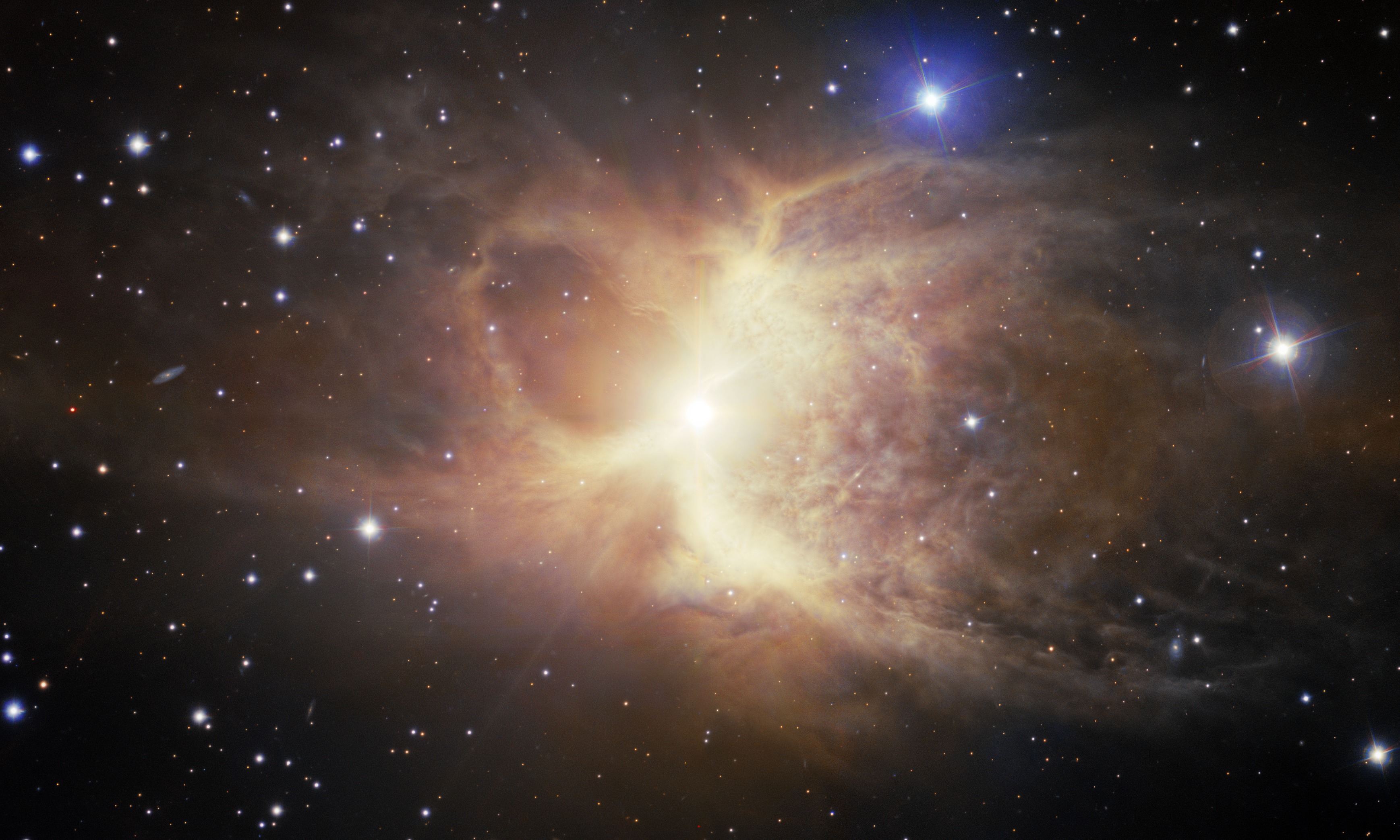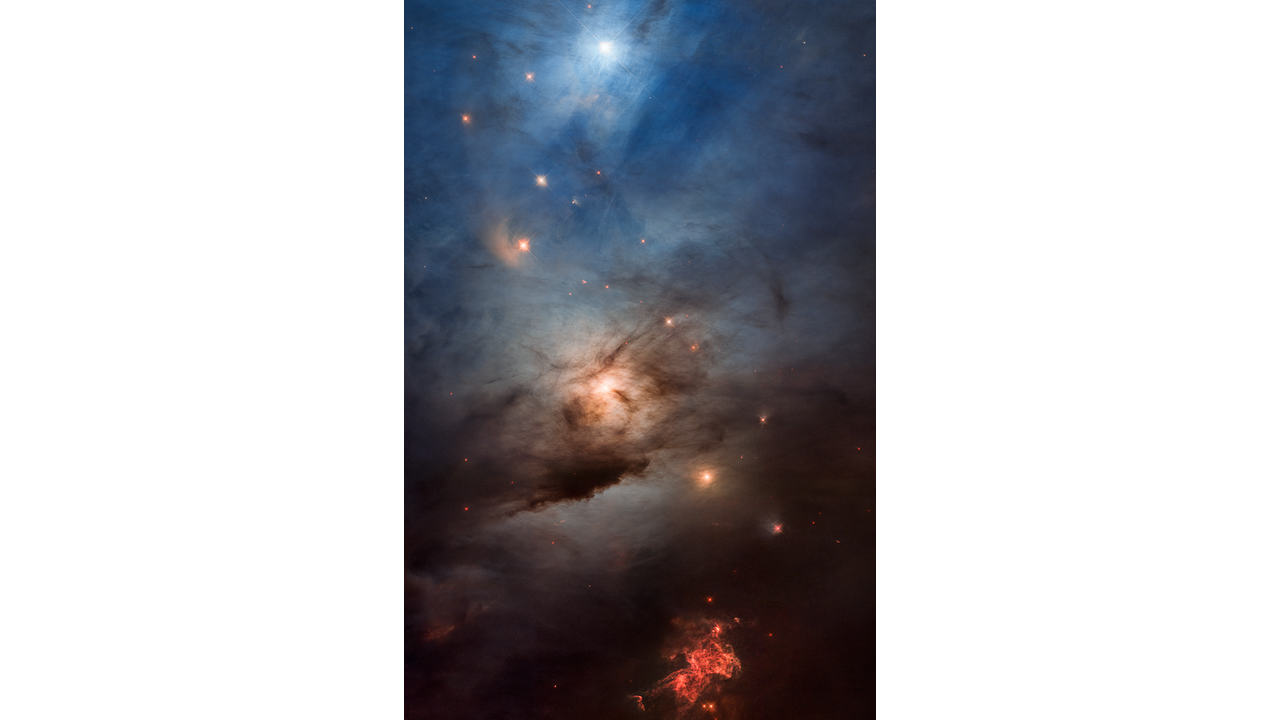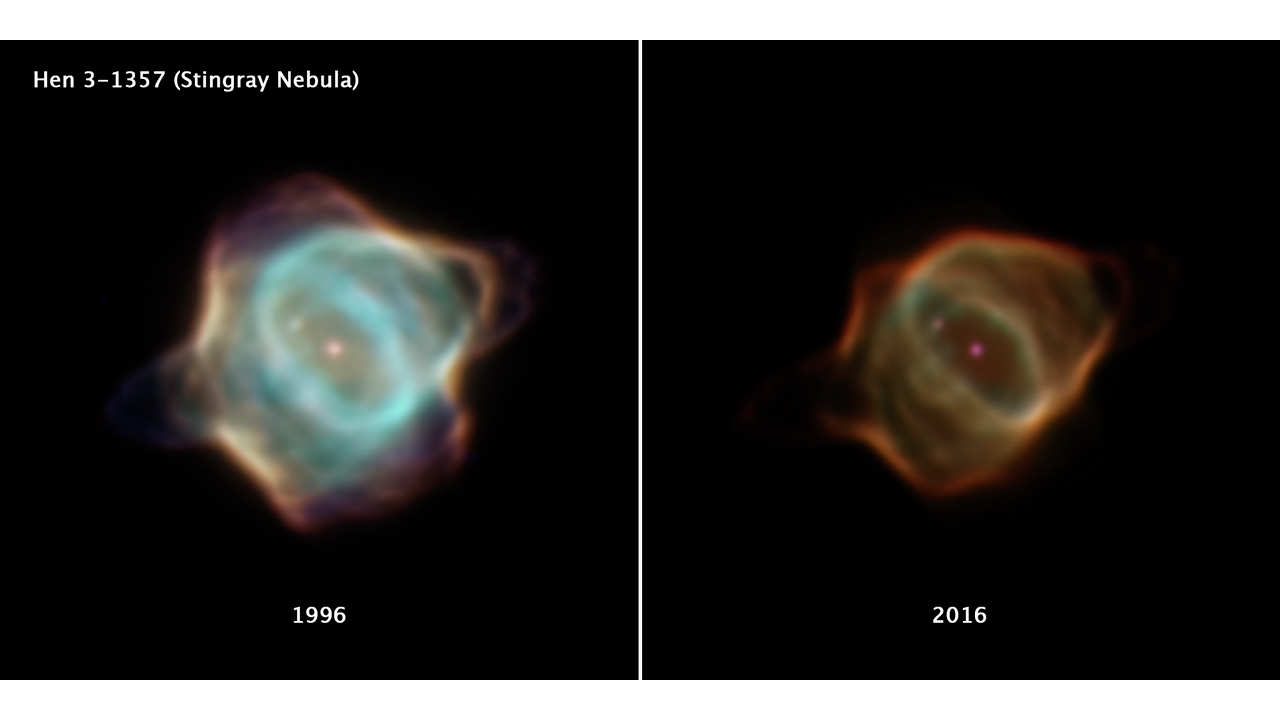Entre los ardientes pétalos de la Nebulosa Roseta se encuentra el joven cúmulo estelar NGC 2244, cuyas estrellas alimentan la nebulosa iluminándola con vibrantes tonos de rojo, oro y púrpura, junto con opacas torres de polvo que se elevan desde las ondulantes nubes que rodean su núcleo. Esta imagen, captada por la Cámara de Energía Oscura de 570 megapíxeles, se publica para celebrar el quinto aniversario de NOIRLab.
Tag: Nebula
Radiant Stars at the Heart of a Cosmic Rose
Cradled within the fiery petals of the Rosette Nebula is NGC 2244, the young star cluster which it nurtured. The cluster’s stars light up the nebula in vibrant hues of red, gold and purple, and opaque towers of dust rise from the billowing clouds around its excavated core. This image, captured by the 570-megapixel Dark Energy Camera, is being released in celebration of NOIRLab’s fifth anniversary.
Webb Captures Top of Iconic Horsehead Nebula in Unprecedented Detail
The Horsehead Nebula is prancing across the cosmic stage in new infrared views from NASA’s James Webb Space Telescope. Extreme close-ups of the horse’s “mane” from Webb’s Near-Infrared Camera (NIRCam) and Mid-Infrared Instrument (MIRI) showcase a dynamic region that transitions from a mostly neutral, warm area of gas and dust within the nebula (represented in blue) to surrounding hot, ionized gas (red).

Una jarra cósmica desbordando material estelar
Una serie de nubes simétricas y ondulantes de polvo y gas marcan la agónica muerte de una antigua estrella gigante roja, tal como lo muestra esta imagen obtenida en Chile por el telescopio Gemini Sur, parte del Observatorio Internacional Gemini, operado por AURA y NOIRLab de NSF. La estructura resultante, que se dice se parece a una jarra inglesa de estilo antiguo, es una nebulosa de reflexión bipolar que rara vez es posible de apreciar. La evidencia sugiere que este objeto se formó por las interacciones entre la estrella gigante roja moribunda y una estrella compañera destrozada hace mucho.

Rare, Double-Lobe Nebula Resembles Overflowing Cosmic ‘Jug’
A billowing pair of nearly symmetrical loops of dust and gas mark the death throes of an ancient red-giant star, as captured by Gemini South, one half of the International Gemini Observatory, operated by NSF’s NOIRLab. The resulting structure, said to resemble an old style of English jug, is a rarely seen bipolar reflection nebula. Evidence suggests that this object formed by the interactions between the dying red giant and a now-shredded companion star.

Hubble Celebrates 33rd Anniversary with a Peek into Nearby Star-Forming Region
Astronomers are celebrating the Hubble Space Telescope’s 33rd launch anniversary with an ethereal photo of the star-forming region NGC 1333. Hubble’s colorful view unveils an effervescent cauldron of glowing gasses and dust stirred up and blown around by several hundred newly forming stars embedded within the dark cloud.
Hubble Captures Giant Star on the Edge of Destruction
Hubble is marking its 31st anniversary in orbit with this image of a “celebrity star.” AG Carinae is one of the brightest stars seen in our Milky Way galaxy, encircled by a glowing halo of gas and dust.

Hubble Captures Unprecedented Fading of Stingray Nebula
Great things take time. This is true when it comes to many processes in the universe. For example, it takes millions of years for stars—the building blocks of the universe—to form. Then, many stars last for billions of years before they die and begin to eject shells of gas that glow against the vastness of space—what we call nebulas. It can be exceedingly rare to capture some of these processes in real time.
Lucky for us, it seems as if the Stingray nebula, Hen 3-1357, was destined to stand out from the crowd since its beginnings. It was dubbed the youngest known planetary nebula in 1998 after Hubble caught a rare peek at the central star’s final stages of life. Now, twenty years after its first snapshot, the Stingray nebula is capturing the attention of astronomers again for a very different reason.
Images from 2016 show a nebula that has drastically faded over the last two decades. Additionally, shells of gas that surrounded the central star have changed, no longer as crisp as
This Supernova in a Lab Mimics the Cosmic Blast’s Splendid Aftermath
(Study publishes 6/17/20. No embargo.) Mystery enshrouds the birth of swirls typical for supernova remnants like the Crab Nebula. A new “supernova machine” may help solve it.

Hubble Marks 30 Years in Space with Tapestry of Blazing Starbirth
A colorful image resembling a cosmic version of an undersea world teeming with stars is being released to commemorate the Hubble Space Telescope’s 30 years of viewing the wonders of space.